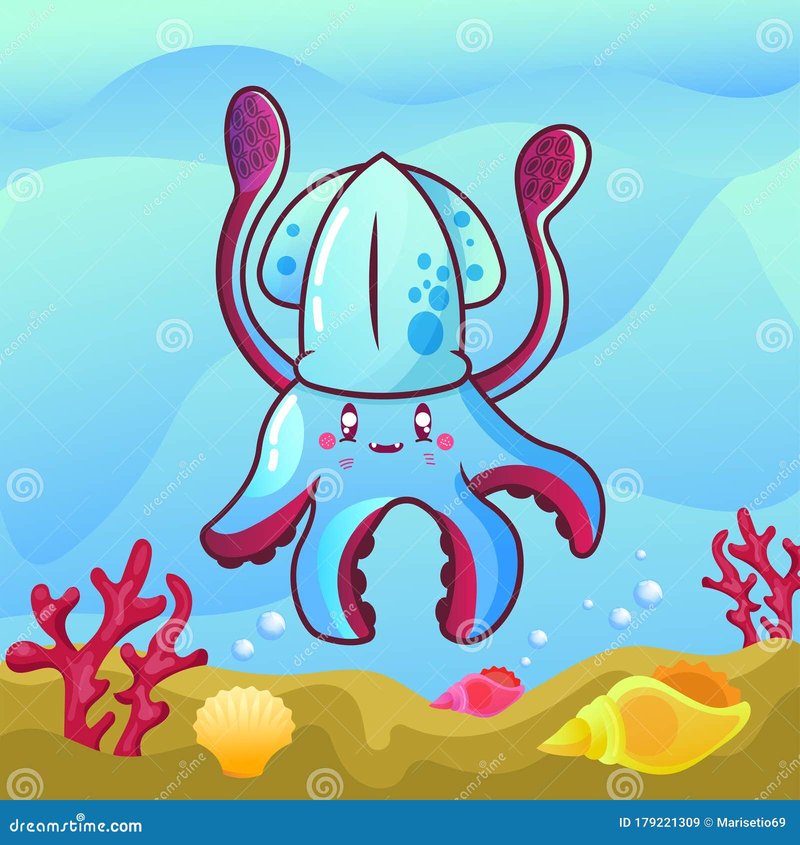
Now, you might be wondering, what exactly makes squids so special? They’re not just colorful sea creatures; they also possess incredible abilities that few other marine animals have. Let’s dig into the fascinating adaptations that help squids navigate their underwater homes and secure their place in the oceanic food chain.
Camouflage and Color Change
One of the most striking adaptations of squids is their ability to change color—much like a chameleon, but in a fluid, underwater ballet. Squids have special skin cells called chromatophores that contain different pigments. When they want to blend in with their surroundings, these cells expand or contract, allowing them to change color in an instant.
Imagine you’re playing hide-and-seek. If you could change your clothes to match your surroundings, you’d have a big advantage, right? That’s how squids can evade predators or sneak up on their prey. But it’s not just about hiding. Squids can also display bright colors and patterns to communicate with each other, much like body language in humans. This can signal everything from mating readiness to aggression.
Additionally, squids can produce bioluminescence. This means they can glow in the dark, using light to confuse predators or attract mates. It’s like carrying a magical flashlight in the dark depths of the ocean!
Speed and Agility
When it comes to speed, squids are like the race cars of the ocean. They have a unique way of moving called jet propulsion. By taking water into their bodies and expelling it quickly through a funnel-like structure, squids can zoom away from threats in a flash. This ability allows them to reach speeds of up to 25 miles per hour!
Consider how a cat darts after a toy. The cat uses its agility and speed to capture what it wants. Similarly, the squid uses its quick movements to escape predators or catch fast-moving prey. Their streamlined bodies are designed for this kind of rapid movement, ensuring they can navigate through the water with ease.
But there’s more to it! Squids can also change direction swiftly, allowing them to weave through tight spaces and dodge attacks. This flexibility is crucial when they’re up against larger fish or other ocean predators that are out to get them.
Intelligent Hunting Strategies
Squids are not just mindless swimmers; they’ve got brains packed with problem-solving skills. These creatures are known for their intelligence, which they use to hunt effectively. They’re skilled ambush predators that often lie in wait for unsuspecting prey. Think of them as stealthy ninjas of the ocean floor.
Using their keen eyesight—some species of squids have the best vision in the animal kingdom—they can spot prey from a distance. Once they see a potential meal, they strike with incredible speed, using their long tentacles lined with powerful suckers to grab and hold onto their catch.
In addition to their stealth, squids often employ teamwork. Groups of squids can coordinate their movements to surround and trap schools of fish. It’s like a well-rehearsed dance, where each squid knows its role. This intelligence and cooperation significantly enhance their chances of a successful meal.
Unique Reproductive Strategies
Let’s talk about how squids ensure their survival for generations to come. Their reproductive strategies are quite unique, often involving fascinating displays and behaviors. Male squids can change color to attract females, showcasing their fitness and health. It’s a bit like a peacock showing off its plumage, but underwater!
Once a male squid wins the attention of a female, he transfers sperm to her using a specialized arm. After mating, females often lay thousands of eggs in safe spots, like crevices or on the ocean floor. They’ll guard the eggs, keeping them safe from predators until they hatch.
Unlike many other sea creatures, squids often put significant effort into ensuring their offspring have a fighting chance. This parental investment helps secure the future of their species, allowing them to thrive in their aquatic environments.
Adaptations for Survival in Deep Waters
Some species of squids inhabit deep ocean waters, where conditions are drastically different from shallower areas. Here’s the thing: it’s dark, cold, and full of pressure. To thrive in such an environment, squids have developed several adaptations.
For starters, deep-sea squids often have larger eyes, which help them see in low light. This is critical for spotting both prey and predators in the dark depths. Their bodies are also softer and more gelatinous, which allows them to withstand the extreme pressure without being crushed.
Another interesting adaptation is their reduced reliance on bioluminescence compared to their shallow-water cousins. In the depths of the ocean, it’s less about glowing and more about using their keen senses to navigate. This means they’ve made adjustments that help them survive where light hardly penetrates.
Adaptations to Avoid Predators
In the underwater world, being a predator is great, but being prey is always a risk. Squids have developed several clever adaptations to avoid becoming someone else’s dinner. Besides their stunning camouflage, squids can eject a cloud of ink when threatened. This ink can create a smokescreen, allowing them to escape while the predator is confused.
Think of it like a magician performing a trick. One moment, the squid is there, and the next, it’s vanished! This ability to evade danger is essential for their survival because predators are always lurking around in the ocean.
Squids also possess a range of defensive behaviors. Some species can puff up their bodies to appear larger than they are, while others might use their speed to dart away. It’s this combination of tactics—camouflage, rapid movement, and defensive skills—that keeps them one step ahead of danger.
Final Thoughts on Squid Adaptations
Squids are truly remarkable beings. Their adaptations—from color changing and speed to intelligence and survival strategies—show how wonderfully diverse life can be in our oceans. Each feature plays a specific role in helping these creatures thrive, making them not only survivors but also masters of their domain.
Just like you might admire how a skilled athlete excels in their sport, it’s hard not to appreciate how squids elegantly navigate their underwater world.
The next time you’re at the beach or watching a nature documentary, take a moment to marvel at these incredible creatures. Understanding their adaptations helps us appreciate the delicate balance of marine ecosystems and the fascinating lives that exist beneath the waves. Exploring the underwater world is not just about the creatures we see; it’s also about the incredible stories of survival and adaptation they tell.

